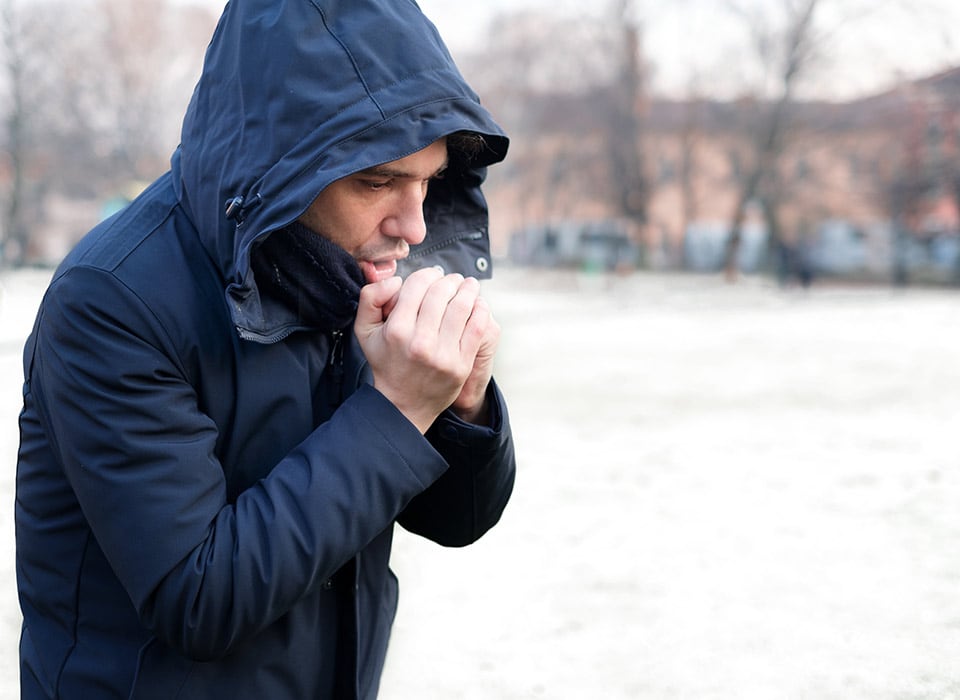Perhaps you believed your grandmother or grandfather was a mystical meteorologist, capable of predicting a temperature drop when his or her joints started to ache. While their psychic abilities are unlikely to be true, it is a long-held belief of those with arthritis that the onset of cold weather increases joint pain.
And winter is coming.
However, the research connecting an increase in joint pain and cold weather isn’t entirely clear. Humidity, precipitation, and temperature do appear to have some effect on arthritis patients, but the true culprit of increased joint pain from cold weather is actually barometric pressure, or pressure of the air.
How does barometric pressure affect arthritis?
There are several schools of thought on why decreases in barometric pressure causes an increase in joint pain. It’s possible that when the cartilage that acts as cushion for our bones is worn down, the exposed nerves become more sensitive and aware to shifts in the atmospheric pressure.
On the other hand, the lowering of barometric pressure means the air pressure is pushing against the body less. This lessening of pressure causes muscles, scar tissue, and tendons to expand and contract, placing more pressure on nerves that control pain centers. Decreased temperatures can also thicken the fluid inside joints, making them stiffer and more painful to maneuver.
What are some tips to ease joint pain in cold weather?
Bundle up
This tip may sound obvious, but make sure to layer up with enough warm clothing during colder weather.
- Gloves or mittens
- Beanie, earmuffs, and scarf
- Waterproof boots and wool socks
- Thermal underclothing (leggings or tights)
Take a warm bath or shower
If you don’t own a heated pool, a warm bath or shower can offer significant relief.
CAUTION: Do not go right out into the cold after your bath or shower. Let your body temperature regulate before venturing out.
Try a paraffin bath
A paraffin bath is a small machine that melts paraffin wax. Place your hands and feet into the melted wax and allow it to harden onto your skin. The heat from the wax will be absorbed by your body, soothing achy joints.
Move
Not necessarily to the tropics (unless you really want to.)
It may seem counterintuitive, but exercise and activity actually ease arthritis pain. A lack of physical activity causes joints to stiffen and become sore.
Take for instance how you feel when waking up after a night of sleep, where the most movement you do is rolling over a couple of times. Your body feels stiff and rigid, right? So, while moving around may cause some slight pain at first, the exercise will ultimately help loosen those joints and alleviate pain.
Try some exercises that are gentle on the joints such as walking, yoga, or swimming. And always remember to stretch before any exercise.
Maintain a healthy weight
The winter months are so persuasive in encouraging us to hibernate inside next to the fire with a warm cup of cocoa in our hands. And there’s also the seemingly endless winter holiday food.
Yet, the more we weigh, the more weight our joints must carry. A healthy weight can help decrease the stress put on weight-bearing joints such as the knees.
Get ahead of the pain! If the weather forecast in your area is predicting cooler temperatures for the week, act early. Plan your warm wardrobes out. After a warm morning shower, stretch and take over-the-counter anti-inflammatories. And get moving!
If arthritis and joint pain persists after implementing these tips, visit orthovirginia.com/appointments to schedule a visit with one of our orthopedic physicians.

